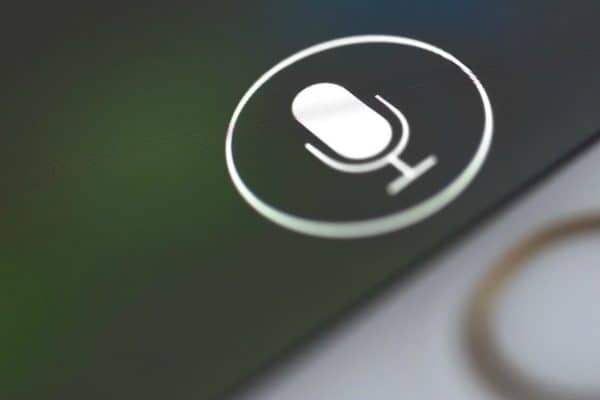If you’ve been turned down for credit or noticed unfavourable terms on loan offers, you might be dealing with adverse credit. Understanding what adverse credit means and how it affects your financial options is the first step towards improving your situation. This guide explains adverse credit, what causes it, and shows you practical ways to move forward.
At Sunny, we’ve helped over 1 million customers find suitable loan options since 2022, including many with adverse credit histories. We work with FCA-authorised lenders who look beyond your credit score to understand your current circumstances.
Whether you’re trying to understand your credit situation or looking for borrowing options, we’re here to help with no fees and no pressure.
What Does Adverse Credit Mean?
The term “adverse” simply means unfavourable or negative. Adverse credit refers to negative information on your credit report that indicates past financial difficulties or payment problems.
This can work against you when applying for loans, mortgages, credit cards, or even mobile phone contracts.
When lenders review your credit history, adverse credit acts as a warning sign that you’ve struggled with credit management in the past. This can include anything from missed payments to more serious issues like County Court Judgements or bankruptcy. It tells lenders you may be riskier to lend to.
What Is Adverse Credit History?
Adverse credit history is the accumulation of negative marks on your credit report over time.
Unlike a single missed payment, an adverse credit history represents a pattern of credit difficulties or significant financial events that have impacted your creditworthiness. This history is recorded by the three main credit reference agencies in the UK: Experian, Equifax, and TransUnion.
Many people develop adverse credit through circumstances beyond their control, such as job loss, illness, or relationship breakdown. This doesn’t define you as a person, but it does affect how lenders view your application.
Related: What Information Is Included In My Credit Report?
Adverse Credit vs Bad Credit: What’s the Difference?
While often used interchangeably, adverse credit and bad credit have subtle differences. Bad credit typically refers to your credit score itself, which is a numerical value (usually between 0-999 depending on the agency). A low credit score indicates bad credit.
Adverse credit, however, refers specifically to the negative items and events recorded on your credit report. These adverse items contribute to a bad credit score, but adverse credit is more about the specific negative marks rather than the overall score.
You can have personal adverse credit from specific incidents even if your overall score has since improved.
Related: What Is Bad Credit?
Common Causes of Adverse Credit History
Understanding what creates an adverse credit history helps you avoid future problems and address existing issues. Here are the most common causes:
Late or Missed Payments
Consistently paying bills late or missing payments altogether is one of the most common causes of adverse credit. This includes credit card payments, loan repayments, mobile phone contracts, and utility bills. Even one or two missed payments can stay on your credit report for up to six years.
Defaults on Credit Agreements
A default occurs when you’ve missed several payments (usually three to six months) and the lender closes your account. This is a serious form of adverse credit that significantly impacts your credit score and remains visible for six years from the default date. Read more in our guide to delinquency vs default.
County Court Judgements (CCJs)
If you fail to repay money owed and the creditor takes legal action, you may receive a CCJ. This is one of the most damaging types of adverse credit and stays on your credit file for six years, even if you pay it off (though it will be marked as satisfied).
Individual Voluntary Arrangements (IVAs)
An IVA is a formal agreement to repay debts over a set period, usually five years. Whilst it helps you manage unmanageable debt, it’s recorded as adverse credit and remains on your file for six years.
Bankruptcy
Declaring bankruptcy is the most serious form of adverse credit. It can lower your credit score by over 200 points and stays on your credit report for six years. During this time, obtaining credit becomes extremely difficult.
High Credit Utilisation
Using too much of your available credit (generally over 30%) can be viewed negatively by lenders. Whilst not as serious as missed payments, consistently maxing out credit cards contributes to adverse credit perceptions.
Frequent Credit Applications
Multiple credit applications in a short period create several hard searches on your credit file. This can suggest financial difficulty and contribute to an adverse credit profile, even if applications were approved.
Related: What Affects Credit Score?
How to Check If You Have Adverse Credit
Knowing whether you have adverse credit helps you understand where you stand financially. Checking is straightforward and free:
Check your credit report with one or all of the three main credit reference agencies: Experian, Equifax, and TransUnion. These reports show your complete credit history, including any adverse information. You can access free reports through services like ClearScore, Credit Karma, or directly from the agencies.
Look for red flags such as defaults, CCJs, late payment markers, or accounts in arrears. The report will show when these adverse items were recorded and when they’re due to be removed. If you spot errors, you have the right to dispute them with the credit reference agency.
Regular monitoring helps you track improvements as adverse items age and eventually drop off your report. At Sunny, we use a soft credit check when you apply, which lets you see if you’re eligible for loans without affecting your credit score further.
Related: What Information Is Included In My Credit Report?
How Long Does Adverse Credit History Last?
The duration of adverse credit history on your credit file depends on the type of adverse item:
- Late payments: Six years from the date of the missed payment
- Defaults: Six years from the default date
- CCJs: Six years from the judgement date (marked as satisfied if paid within one month)
- IVAs: Six years from the date of approval
- Bankruptcy: Six years from the bankruptcy date
- Debt relief orders: Six years from the approval date
Whilst you cannot remove legitimate adverse credit entries before their expiry date, their impact lessens over time. Lenders focus more on recent behaviour, so demonstrating improved financial management helps even whilst adverse credit remains visible.
How Adverse Credit Affects Your Financial Life
Having adverse credit history creates several challenges, but understanding these helps you navigate them:
Loan Applications
Traditional banks and mainstream lenders typically decline applications from people with adverse credit. You’re viewed as higher risk because your credit history suggests potential repayment difficulties. However, specialist lenders, including those in Sunny’s network, specifically work with customers who have adverse credit histories.
Interest Rates and Costs
When you are approved for credit despite adverse history, you’ll generally face higher interest rates. Lenders charge more to offset the perceived risk. This makes borrowing more expensive, which is why improving your credit should be a priority.
Related: What Are Interest Rates and What Do They Mean?
Credit Limits
Even when approved, you’ll likely receive lower credit limits than someone with excellent credit. Lenders want to limit their exposure to potential losses, so they’ll offer smaller amounts initially.
Other Financial Services
Adverse credit can affect more than just borrowing. It may impact your ability to rent property (as landlords often check credit), get mobile phone contracts on monthly payment plans, or even open certain bank accounts. Some employers in financial services also check credit histories.
Can You Get a Loan With Adverse Credit?
Yes, you can get a loan even with adverse credit history. Whilst high street banks may decline your application, specialist lenders understand that past financial difficulties don’t necessarily predict future behaviour. Life circumstances change, and many people successfully rebuild their finances after credit problems.
At Sunny, we connect you with FCA-authorised lenders who consider applications from people with various credit histories. Our lenders look at your current situation, including income and affordability, not just your past. We offer loans from £100 to £2,500 with flexible repayment terms from 3 to 36 months.
When you apply through Sunny, we use a soft credit check initially, which doesn’t affect your credit score. This lets you see if you’re likely to be approved before committing to a full application. We never charge fees for our service, and you’re never obligated to accept any offer.
If you’re looking for financial support despite adverse credit, explore our bad credit loans or emergency loans for urgent needs.
How to Improve Your Adverse Credit History
Whilst adverse credit items remain on your file for up to six years, you can actively improve your credit score and demonstrate financial responsibility to future lenders:
Pay All Bills on Time
Consistently paying every bill on time is the most effective way to rebuild credit. Set up direct debits for regular payments to avoid accidental late payments. Even small improvements over months show lenders you’ve changed your financial habits.
Reduce Outstanding Debt
Focus on paying down existing debts, particularly credit cards and overdrafts. Aim to use less than 30% of your available credit. This demonstrates financial control and improves your credit utilisation ratio, which lenders view positively.
Register to Vote
Adding yourself to the electoral register helps lenders verify your identity and address. This simple step can improve your credit score and makes lenders more confident in your application.
Avoid Multiple Applications
Each credit application that involves a hard search leaves a mark on your credit file. Multiple applications in a short period suggest financial stress and can worsen your adverse credit situation. Use eligibility checkers with soft searches instead.
Check for Errors
Credit reports sometimes contain mistakes. If you spot incorrect adverse information, contact the credit reference agency to dispute it. Successfully removing errors can significantly improve your credit score.
Consider a Credit Builder Card
Credit builder cards are specifically designed for people rebuilding credit. They have low credit limits and high interest rates, but using one responsibly (low spending, full monthly payments) demonstrates improved financial behaviour.
Keep Old Accounts Open
The length of your credit history matters. If you have old credit cards or accounts without adverse marks, keep them open even if you don’t use them regularly. This shows a longer track record of credit management.
Living With Adverse Credit: Practical Tips
Whilst working to improve your credit, you still need to manage your financial life. Here’s how to deal with personal adverse credit practically:
- Be realistic about borrowing. Only borrow what you genuinely need and can afford to repay. Taking on debt you can’t manage will worsen your adverse credit situation. Use loan calculators to understand the full cost before applying.
- Build an emergency fund. Even small amounts saved regularly create a buffer for unexpected expenses, reducing reliance on credit. This helps prevent the cycle of debt that perpetuates adverse credit.
- Seek free debt advice. If you’re struggling with existing debts, organisations like StepChange and Citizens Advice offer free, confidential support. They can help negotiate with creditors and create manageable repayment plans.
- Focus on the future. Adverse credit is frustrating but temporary. Every month of positive financial behaviour moves you closer to a better credit score. Small, consistent improvements add up over time.
To help, we have a lot of tips on how to be more money-savvy, such as money-saving hacks on our Good Vibes blog.
Understanding Your Rights
Even with adverse credit history, you have important rights:
Lenders must treat you fairly under FCA regulations. They cannot discriminate based on credit history alone and must assess affordability properly. If you’re declined for credit, you have the right to ask why and challenge the decision if you believe it’s unfair.
You can access your credit report for free and dispute any errors. Credit reference agencies must investigate disputed items and correct mistakes. You also have the right to add a Notice of Correction to your credit file, explaining circumstances behind adverse credit (though this doesn’t remove the adverse item).
Debt collectors and creditors must follow strict rules. They cannot harass you or use aggressive tactics. If you’re experiencing this, report it to the Financial Ombudsman Service or the FCA.
Frequently Asked Questions About Adverse Credit
What does adverse credit mean on a credit report?
Adverse credit on your credit report refers to negative entries that indicate past financial difficulties, such as missed payments, defaults, CCJs, or bankruptcy. These entries warn lenders that you’ve struggled with credit in the past, which affects their decision to lend to you and the terms they offer.
What is the difference between adverse credit and bad credit?
Bad credit refers to your overall credit score being low (typically below 600), whilst adverse credit specifically means negative items or events recorded on your credit report. Adverse credit items contribute to a bad credit score, but adverse credit focuses on the specific negative marks rather than just the numerical score. Read more about what is bad credit.
Can I get a mortgage with adverse credit history?
Yes, but it’s more challenging. Specialist mortgage lenders work with people who have adverse credit, though you’ll likely need a larger deposit (often 15-25%) and face higher interest rates. The severity and recency of your adverse credit matters. More recent issues or serious problems like bankruptcy make approval harder.
How does adverse credit affect my chances of getting a loan?
Adverse credit history reduces your chances of approval with mainstream lenders, but specialist lenders (like those in Sunny’s network) specifically cater to people with adverse credit. You may receive higher interest rates and lower loan amounts, but approval is possible if you can demonstrate current affordability and stable income.
What is personal adverse credit?
Personal adverse credit refers to negative credit information specific to your individual credit file, such as your own missed payments, defaults, or CCJs. This distinguishes it from linked adverse credit (from joint accounts or financial associations with others) that might also appear on your report.
Will adverse credit affect renting a property?
Yes, many landlords and letting agents check credit reports as part of their tenant screening. Adverse credit history may make them hesitant, but it’s not necessarily a barrier. You can improve your chances by offering a larger deposit, providing a guarantor, or seeking private landlords who don’t use agencies.
How can I check if I have adverse credit?
Check your credit report for free with Experian, Equifax, or TransUnion. Use free services like ClearScore or Credit Karma for easy access. Look for red flags including defaults, CCJs, late payment markers, or accounts showing as in arrears. These indicate adverse credit on your file.
Can adverse credit be removed before six years?
Legitimate adverse credit entries cannot be removed before six years, even if you pay off the debt. The only exception is if the information is incorrect or fraudulent. In these cases, you can dispute the entry with the credit reference agency. Paid CCJs can be removed if settled within one month.
Does paying off adverse credit improve my score immediately?
Paying off debts helps, but the adverse credit entry remains on your file for six years. However, paying defaults or CCJs shows them as “satisfied” on your report, which lenders view more favourably than outstanding adverse credit. Your credit score gradually improves as you demonstrate consistent positive behaviour.
Can I get a credit card with adverse credit history?
Yes, credit builder credit cards are designed for people with adverse credit. These cards have low credit limits and higher interest rates but allow you to rebuild credit through responsible use. Always pay the full balance monthly and keep spending below 30% of your limit.
Will adverse credit affect my partner’s credit score?
Your adverse credit doesn’t directly affect your partner’s credit score unless you have joint financial accounts together. However, if you apply for joint credit, both credit histories are assessed. Financial association (created through joint accounts) means lenders may consider both credit files when one of you applies for credit individually.
What happens if I have adverse credit and need money urgently?
Options exist even with adverse credit history. Specialist lenders, including those in Sunny’s network, offer emergency loans and same-day loans for people with various credit histories. We use soft credit checks initially, so exploring your options doesn’t damage your credit score further.
Warning: Late repayment can cause you serious money problems. For help, go to moneyhelper.org.uk
Sunny is a registered trading name of Upward Finance Limited, which is an Introducer Appointed Representative of Flux Funding Limited and is entered on the Financial Services Register under reference number 821471. Flux Funding Limited is authorised and regulated by the Financial Conduct Authority and is entered on the Financial Services Register under reference number 806333.




















